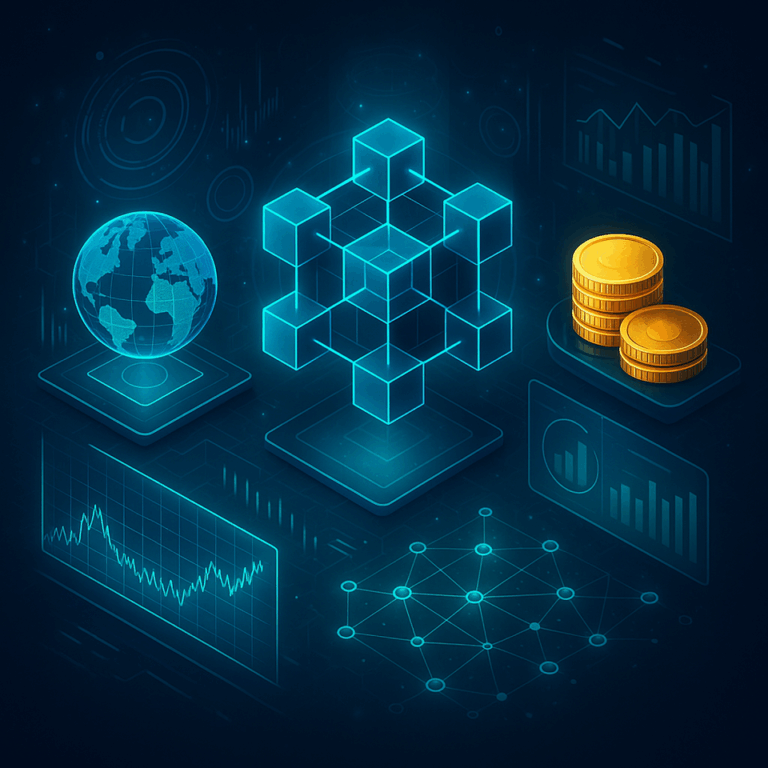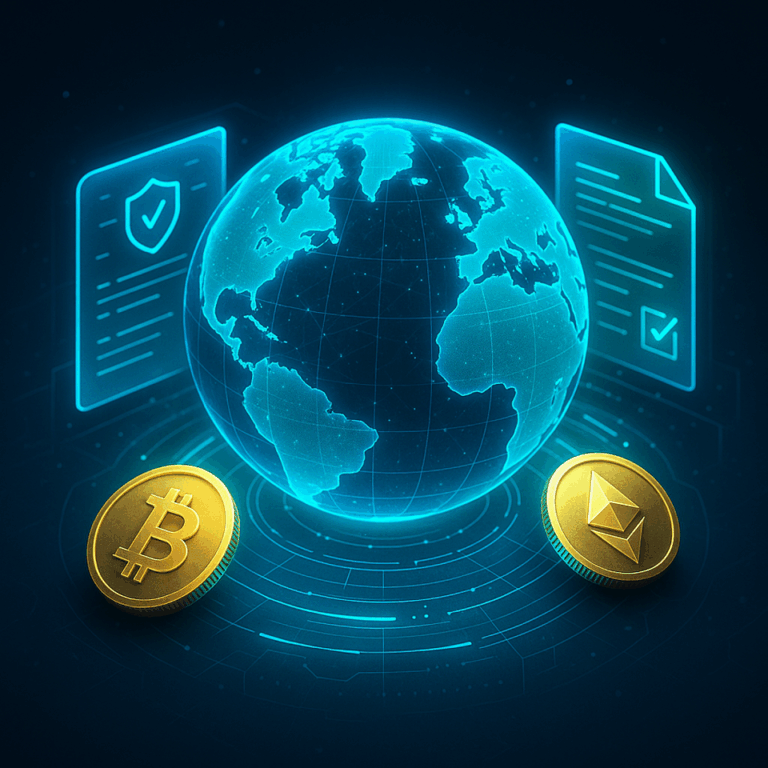In 2025, the financial world is experiencing one of the most significant transformations in its history—the rise of tokenization. While cryptocurrencies like Bitcoin and Ethereum continue to dominate headlines, the tokenization of real-world assets has quietly become the most disruptive innovation in finance. This technology is reshaping investment strategies, democratizing access to markets, and enhancing liquidity across industries once reserved for institutional players. As blockchain technology matures and regulations become clearer, tokenization stands poised to redefine what it means to own and invest in assets.
Tokenization refers to the process of converting physical or intangible assets into digital tokens stored on a blockchain. These tokens represent ownership or a share of an underlying asset, making it possible for anyone to invest in high-value assets such as real estate, art, or commodities with fractional ownership. In 2025, tokenization is no longer a speculative concept—it has become a core component of global finance, bridging the gap between traditional markets and the digital economy.
Understanding Tokenization: The Foundation of Digital Ownership
At its core, tokenization enables assets to be divided into smaller, tradeable units recorded securely on blockchain networks. This concept is revolutionary because it removes traditional barriers to entry and allows investors of all sizes to participate in markets that were once inaccessible. By creating digital tokens that represent real-world assets, blockchain technology transforms how value is stored, transferred, and managed.
For example, imagine a $1 million property in London being split into 10,000 tokens, each representing a 0.01% ownership share. Investors from around the world can purchase these tokens for $100 each, gaining exposure to the property market without the complexities or costs of direct ownership. This fractional model increases liquidity and flexibility, as tokens can be easily traded or sold on secondary markets, providing a level of accessibility that traditional real estate or art ownership could never achieve.
The technology underpinning this system—blockchain—ensures that ownership records are immutable, transparent, and tamper-proof. Every transaction is verified and recorded, reducing fraud and building trust in a digital-first investment environment.
The Current Landscape of Tokenization in 2025
As of October 2025, the tokenization market has grown exponentially, reaching an estimated $2 trillion in total tokenized asset value. According to the Global Financial Market Authority (GFMA), real estate leads the charge, accounting for roughly 60% of the market, followed by art, commodities, and intellectual property. This growth has been fueled by increasing institutional participation, improved regulatory frameworks, and the mainstream acceptance of blockchain-based assets.
Major platforms such as RealT, Securitize, and CurioInvest have become household names in the tokenization space. They provide compliant, user-friendly ecosystems where investors can securely buy, sell, and trade tokenized assets. These platforms have also simplified regulatory compliance by integrating identity verification, smart contracts, and audit mechanisms directly into their systems.
In addition to traditional investment sectors, tokenization is being adopted by governments and corporations alike. Several national banks have begun experimenting with tokenized bonds and securities, while private firms are leveraging tokenization to raise capital through digital asset offerings. This institutional adoption signals that tokenization is not just a passing trend but a foundational element of the financial system’s future.
The Benefits of Tokenization: Unlocking New Opportunities
The rapid rise of tokenization can be attributed to its transformative benefits, which extend beyond convenience and cost efficiency. These advantages include increased liquidity, greater accessibility, enhanced transparency, and global market participation.
1. Increased Liquidity
One of the main advantages of tokenization is liquidity. Traditional high-value assets, such as real estate or fine art, are typically illiquid—difficult to sell quickly without significant discounts. Tokenization changes that by dividing assets into smaller, tradeable units that can be exchanged on digital marketplaces. Investors can buy or sell their shares instantly, without waiting for months or years to complete a traditional sale.
2. Accessibility and Financial Inclusion
Tokenization lowers barriers to entry by allowing investors to purchase fractional ownership of assets. A retail investor who could never afford a $500,000 painting can now own a $500 share of it through tokens. This democratization of finance makes wealth generation more inclusive, bringing new participants into global markets and empowering people from emerging economies to invest in traditionally exclusive asset classes.
3. Transparency and Security
Blockchain technology ensures that all transactions are recorded on a decentralized ledger, providing full transparency and reducing the potential for fraud. Smart contracts automate processes like dividend distribution, interest payments, and ownership transfers, removing the need for intermediaries while maintaining accuracy and compliance.
4. Global Reach and Borderless Markets
Tokenized assets can be traded globally 24/7, unrestricted by national borders or banking hours. This unprecedented accessibility attracts a broader pool of investors, boosting liquidity and price discovery. By bridging geographical divides, tokenization makes financial participation truly global.
Challenges and Risks in the Tokenization Era
While tokenization offers transformative advantages, several challenges continue to shape its development. The most pressing issues include regulatory uncertainty, technological complexity, and cybersecurity concerns.
Regulation remains the primary challenge. Different countries have varying interpretations of tokenized assets—some treat them as securities, while others classify them as commodities or utilities. This lack of consistency complicates cross-border trading and limits investor confidence. However, progress is being made: in 2025, the European Union’s Markets in Crypto-Assets (MiCA) regulation and the U.S. SEC’s proposed frameworks are providing much-needed clarity.
Security is another major concern. Although blockchain itself is highly secure, the platforms facilitating tokenization are vulnerable to hacks and phishing attacks. Several high-profile breaches have underscored the importance of rigorous cybersecurity protocols and investor education. Tokenization platforms must continually evolve their security infrastructure, implementing advanced encryption, two-factor authentication, and cold storage systems.
Additionally, interoperability—the ability for different blockchains to communicate seamlessly—remains a technical challenge. With tokenized assets spread across multiple networks, ensuring compatibility and liquidity across ecosystems is crucial for sustained growth.
Regulation and Legal Frameworks: Building Trust in a New Market
The role of regulators in shaping the tokenization market cannot be overstated. In 2025, governments are striking a balance between innovation and investor protection.
The European Union’s MiCA regulation, enacted this year, establishes comprehensive guidelines for the issuance and trading of crypto and tokenized assets. It emphasizes transparency, standardized disclosures, and investor safeguards, aiming to make Europe a global leader in digital asset regulation.
In the United States, the Securities and Exchange Commission (SEC) continues to refine its approach to tokenized assets. New guidelines focus on classifying different types of tokens—such as utility, security, and stable tokens—under existing laws. These efforts are creating a clearer legal environment that encourages responsible innovation.
Meanwhile, countries in Asia, including Singapore and Japan, have emerged as regulatory pioneers, offering streamlined licensing frameworks that attract fintech companies and institutional investors. As international coordination improves, the tokenization market is moving toward greater legitimacy, stability, and investor confidence.
Beyond Real Estate: Expanding Frontiers of Tokenization
While real estate remains the largest tokenized sector, 2025 has witnessed rapid diversification across industries. Tokenization now extends to art, collectibles, intellectual property, and even commodities—each bringing unique benefits and challenges.
Art and Collectibles
The art world has embraced tokenization to address long-standing issues of authenticity, ownership, and liquidity. Platforms like Masterworks and Myco allow investors to purchase fractional ownership of fine art and collectibles, creating a transparent, verifiable record of provenance on the blockchain.
Commodities
Tokenization is revolutionizing commodity trading. Gold, silver, and oil are now commonly tokenized, allowing investors to gain exposure to physical assets without storage or transportation challenges. These tokens are backed by real reserves held in secure vaults, providing both convenience and confidence.
Intellectual Property and Royalties
Tokenization is also transforming creative industries. Musicians, authors, and software developers can now tokenize intellectual property rights, allowing investors to purchase shares in future royalties. This innovation provides creators with immediate liquidity while enabling fans and investors to participate in the success of creative works.
Private Equity and Venture Capital
Tokenization is bringing unprecedented liquidity to private markets. Investors can trade shares in startups or private funds on secondary markets, unlocking liquidity for traditionally long-term investments.
Future Trends: What Lies Ahead for Tokenization
Looking toward the future, tokenization is expected to integrate deeply with other emerging technologies and financial innovations. Several trends are shaping the next stage of its evolution:
1. Integration with Decentralized Finance (DeFi)
The fusion of tokenization with DeFi platforms will unlock new financial products, such as tokenized lending, collateralized borrowing, and decentralized yield generation. Investors will be able to use tokenized assets as collateral, bridging traditional finance with blockchain-native systems.
2. Cross-Chain Interoperability
As more blockchains emerge, ensuring seamless communication between networks will become essential. Cross-chain bridges and interoperability protocols will enable tokenized assets to move fluidly between ecosystems, improving liquidity and expanding market reach.
3. Artificial Intelligence and Predictive Analytics
AI-driven analytics are expected to play a critical role in risk management and asset valuation within tokenized markets. Intelligent algorithms will assess trends, detect fraud, and provide insights that enhance decision-making for both investors and institutions.
4. Institutional Adoption and Infrastructure Development
Institutional adoption of tokenization is accelerating. Global banks, asset managers, and government agencies are building blockchain-based platforms to tokenize securities, bonds, and even public infrastructure projects. These developments will mainstream tokenization, bringing it closer to everyday financial operations.
Conclusion
As we move deeper into 2025, tokenization stands as one of the most powerful forces transforming global finance. By enabling fractional ownership, enhancing liquidity, and democratizing access to investments, it has opened the doors of opportunity for individuals and institutions alike. What began as an offshoot of cryptocurrency innovation has now evolved into a cornerstone of modern finance, bridging traditional assets with the blockchain economy.
The challenges of regulation, security, and interoperability remain, but the momentum behind tokenization is undeniable. Governments, corporations, and investors are recognizing its potential to make financial markets more transparent, inclusive, and efficient. The future of tokenization lies in collaboration—between technology and regulation, between innovation and security, and between the old and the new financial world.
In this new era of digital ownership, tokenization is not just changing how we invest—it is redefining what it means to own value in the 21st century.



